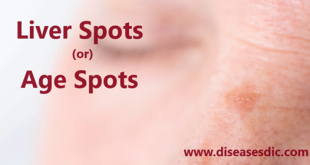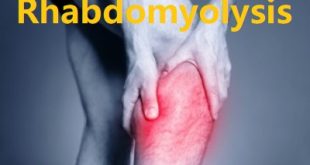What are leg cramps?
Leg cramps are sudden, involuntary, intense muscle pains usually in your calf, foot or thigh. You might also know them as a “charley horse.” Sometimes the cramp may cause your leg to spasm – to tighten uncontrollably. Although painful to live with, cramps are generally harmless. A leg cramp feels like a clenched, contracted muscle tightened into a knot. It can be severely uncomfortable, painful or even unbearable. Your muscles in the area might hurt for hours after the cramp goes away.
Pathophysiology
The pathophysiology of leg cramps, in contrast, is usually the result of disrupted energy production in muscle cells and occurs most commonly in metabolic myopathies associated with disorders of glycogen, lipid, or mitochondrial metabolism. Metabolic myopathies cause deficient ATP levels. Because muscle relaxation is an adenosine triphosphate (ATP)-dependent active process, actin and myosin chains do not disengage, causing an electrically silent cramp (ie, contracture). The metabolic defect may also cause accumulation of potentially toxic metabolites that further aggravate ATP deficientcy.
Causes of leg cramps
The cause of leg cramps is sometimes unknown (idiopathic). In other cases, there may be an underlying condition or another identifiable cause.
Idiopathic leg cramps
Although the cause of idiopathic leg cramps is unknown, there are a number of theories about what might cause idiopathic leg cramps. These include:
- Abnormal nerve activity during sleep which causes the muscle of the leg to cramp
- Excessive strain placed on leg muscles, such as when exercising, may cause the muscles to cramp at certain times
- A sudden restriction in the blood supply to the affected muscles
Also, tendons naturally shorten over time as a person gets older, which may explain why older people are particularly affected by leg cramps. Tendons are tough bands of tissue that connect muscles to bone. If your tendons become too short, they may cause the muscles connected to them to cramp.
Secondary leg cramps
Secondary leg cramps are caused by an underlying condition or another identifiable cause. These include:
- Pregnancy: the extra weight of pregnancy can place strain on the leg muscles, making them more vulnerable to cramping
- Exercise: leg cramps are often experienced when resting after exercise
- Neurological conditions (conditions that affect the nerves in your leg muscles): for example, motor neurone disease or peripheral neuropathy
- Liver disease: if your liver stops working properly, toxins will build up in your blood, which can make your muscles go into spasm
- Infection: some types of bacterial infection, such as tetanus, can cause muscle cramps and spasm
- Toxins: in some people, high levels of toxic (poisonous) substances in the blood, such as lead or mercury, can cause leg cramps
- Dehydration: in some people, low levels of water in the body can lead to a drop in your salt levels, which can trigger muscle cramps
Who is at risk for muscle cramps?
Anyone can get muscle cramps, but they are more common in some people:
- Older adults
- People who are overweight
- Pregnant women
- People with certain medical conditions, such as thyroid and nerve disorders
Symptoms of leg cramps
Symptoms of a leg cramp include:
- A sudden pain in the muscles of the leg caused by an involuntary contracting (shortening) of the leg muscle
- Most occur in the calf muscles and, less commonly, in the feet and thighs
- Cramps can last from a few seconds up to 10 minutes – thigh muscle cramps tend to last the longest
- During cramping, the affected muscles will become tight and painful and the feet and toes will be stiff
- After the cramps have passed, you may have pain and tenderness in your legs for several hours
What are the potential complications of leg cramps?
Because leg cramps can be due to serious diseases, failure to seek treatment for leg cramps that are not relieved with self-care measures can result in serious complications and permanent damage. Once the underlying cause is diagnosed, it is important for you to follow the treatment plan that you and your healthcare professional design specifically for you to reduce the risk of potential complications including:
- Loss of mobility
- Nonrestorative sleep
- Overuse injuries
- Progressive symptoms
- Skin changes
Diagnosis of leg cramps
Evaluation of leg cramps focuses on recognition of what is treatable. In many cases, a disorder contributing to cramps has already been diagnosed or causes other symptoms that are more troublesome than cramps.
Cramps must be differentiated from claudication and dystonias; clinical evaluation is usually adequate.
History
History of present illness should elicit a description of cramps, including their duration, frequency, location, apparent triggers, and any associated symptoms. Symptoms that may be related to neurologic or muscle disorders can include muscle stiffness, weakness, pain, and loss of sensation. Factors that can contribute to dehydration or electrolyte or body fluid imbalances (eg, vomiting, diarrhea, excessive exercise and sweating, recent dialysis, diuretic use, pregnancy) are recorded.
Review of systems should seek symptoms of possible causes, including the following:
- Amenorrhea or menstrual irregularity: Pregnancy-related leg cramps
- Cold intolerance with weight gain and skin changes: Hypothyroidism
- Weakness: Neurologic disorders
- Pain or loss of sensation: Peripheral neuropathies or radiculopathies
Past medical history should include any disorders that can cause cramps. A complete drug history, including use of alcohol, is taken.
Physical examination
General examination should include the skin, looking for stigmata of alcoholism, nonpitting edema or loss of eyebrow hair (suggesting hypothyroidism), and changes in skin moisture or turgor. A neurologic examination, including deep tendon reflexes, is done.
Pulses should be palpated, and blood pressure measured in all extremities. A weak pulse or low ankle:brachial blood pressure ratio in an affected limb may indicate ischemia.
Test
There are no routine tests for diagnosing leg cramps. Instead, doctors order tests to rule out or confirm an underlying condition. This could include a variety of tests, such as:
- Blood or urine tests to check electrolyte levels, kidney function, liver function, hormone levels, and nutritional status
- Vascular imaging may identify a blood vessel cause for the leg cramping. Peripheral artery disease or venous insufficiency may generate symptoms that could mimic painful leg cramps.
- Nerve conduction studies may also be useful if your doctor thinks a nerve or muscle disease could be to blame. These tests tell your doctor if there is a problem with the nerves that control your muscles or the muscles themselves.
- Your doctor may order an electromyography (EMG). This is a test that measures muscle activity and checks for muscle abnormalities. An MRI may also be a helpful test. It’s an imaging tool that creates a picture of your spinal cord.
- On occasion, a myelogram, or myelography, another imaging study, might be helpful.
Let your doctor know if you’re experiencing weakness, pain, or a loss of sensation. These symptoms can be signs of a nerve disorder.
Treatment
No medication is likely to prevent leg cramps.
If a severe cramp leaves a muscle feeling tender, an over-the-counter (OTC) painkiller may help.
In the past, people used quinine. However, the Food and Drug Administration (FDA) urge people not to use this, as it may have dangerous interactions and side effects.
There is limited evidence that exercise and stretching, calcium channel blockers, carisoprodol, and vitamin B-12 may help. Multivitamins may be of some use during pregnancy.
There is no evidence that nonsteroidal anti-inflammatory drugs (NSAIDs), calcium, or potassium are of any benefit.
Exercises and stretches
If there is no underlying cause, leg cramps will probably get better without treatment.
Walking on tiptoes may help stretch the muscles and relieve a cramp.
Stretching exercises may help. If the cramp is in the calf muscle try the following stretches:
Hamstring muscle stretch
Image credit: Zinkevych/Getty Images
- Sit on the floor with legs straight out in front.
- Pull the toes up toward the knee, to stretch the calf muscle.
- Hold for 30 seconds.
Calf muscle stretch
- Stand about one meter from a wall with both feet flat on the ground.
- Lean forward against the wall with the arms outstretched and the hands flat on the wall. Keep the heels on the ground.
- Hold for 10 seconds, then gently return to an upright position.
- Repeat 5-10 times.
Quadriceps muscle stretch
- Stand up straight, holding a wall or chair for support if necessary.
- Pull one foot up toward the buttocks, grasp and ankle, and hold the foot as close to the body as far as possible.
- Hold for 30 seconds, then repeat with the other foot.
Doing these exercises may help relieve or prevent cramps. They can also serve as a warm up before exercise.
What medicines may help with leg cramps?
At this time, there is no recommended medication that can prevent leg cramps 100% of the time. However, there are some prescription medications that show a little evidence of preventing leg cramps. Under your healthcare provider’s watchful eye, you might want to try the following:
- Carisoprodol (Soma®): A muscle relaxant.
- Diltiazem (Cartia XT®): A calcium-channel blocker.
- Orphenadrine (Norflex®): Treats muscle spasms and relieves pain and stiffness in muscles.
- Verapamil: A calciuim-channel blocker.
Home remedies
The American Academy of Orthopaedic Surgeons (AAOS) suggest the following to ease cramping:
- Stop the activity that caused the cramp.
- Stretch and massage the muscle.
- Hold the leg in the stretched position until the cramp stops.
- Apply heat to muscles that are tight or tense.
- Use cold packs on tender muscles.
Some people use supplements, such as magnesium, to reduce muscle cramps.
Stretching before bedtime may help, but evidence is limited.
Preventing leg cramps
If you often get leg cramps, regularly stretching the muscles in your lower legs may help prevent the cramps or reduce their frequency.
You might find it useful to stretch your calves before you go to bed each night (see stretching advice above or try this post-exercise calf stretch).
The following night-time advice may also help:
- If you lie on your back, make sure that your toes point upwards – placing a pillow on its side at the end of your bed, with the soles of your feet propped up against it may help keep your feet in the right position.
- If you lie on your front, hang your feet over the end of the bed – this will keep your feet in a relaxed position and help stop the muscles in your calves from contracting and tensing.
- Keep your sheets and blankets loose.
 Diseases Treatments Dictionary This is complete solution to read all diseases treatments Which covers Prevention, Causes, Symptoms, Medical Terms, Drugs, Prescription, Natural Remedies with cures and Treatments. Most of the common diseases were listed in names, split with categories.
Diseases Treatments Dictionary This is complete solution to read all diseases treatments Which covers Prevention, Causes, Symptoms, Medical Terms, Drugs, Prescription, Natural Remedies with cures and Treatments. Most of the common diseases were listed in names, split with categories.







